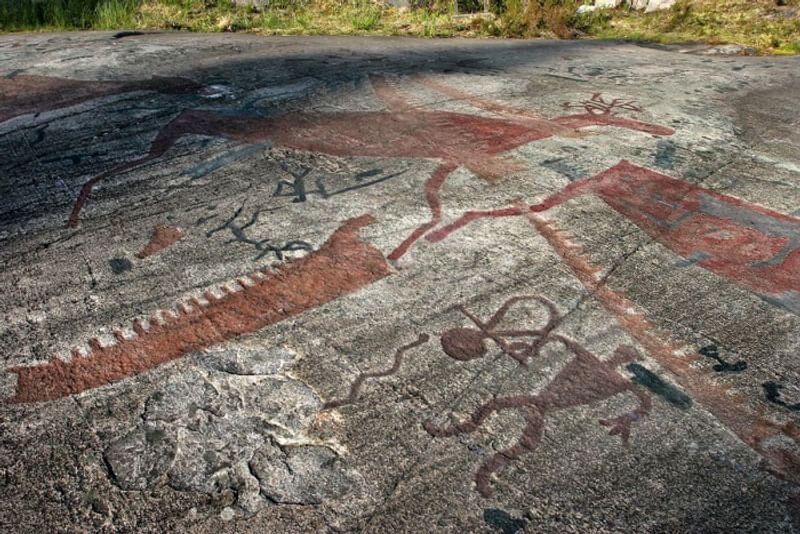April 5, 2024
Petroglyphs of Lake Onega and the White Sea

Around the IV—III millennia BC, people already sought to capture the plots of their everyday life or depict fantasy plots in any available way. Petroglyphs are ancient rock carvings carved on the stone surface or painted. As a rule, petroglyphs were of a religious, memorial, ritual and ceremonial nature. The name is derived from the ancient Greek words: πέτρος — stone, γλυφή — carving.
Karelian petroglyphs are of the greatest interest. Some of the most mysterious and ancient rock carvings on Earth are the petroglyphs of Lake Onega and the White Sea. They depict human figures, hunting and battle scenes, animals and symbols that have not been deciphered to this day. For example, a creature on two legs with two balls instead of a head, or signs oriented strictly to the west or east. Solar – lunar signs may be evidence of the existence of an ancient observatory.
Onega and Belomorsky images were discovered in the early 19th century by geologist and archaeologist K.I. Greving, then they were first documented and copied. It is noteworthy that the neighboring village is called "Devils Nose", which is associated with the belief of the local population in the demonic power of drawings. In the 20-60s of the XX century, an in-depth study of images began, which continues to this day: researchers systematize and decode drawings, conduct excavations.
The White Sea images are small: from 20 to 50 centimeters, with the exception of moose, whose size reaches 3.5 meters. The subjects of the drawings are very realistic: boats with crew, scenes of hunting birds and seals, compositions of battles. There are 8 footprints of human feet on the gentle rock of Shoiruksha Island, leading to a meter-high figure of a Demon depicted in profile.
The Onega petroglyphs are distinguished by their mystical character, depicting cosmic, "solar" and "lunar" signs – circles with lines and rays. Presumably, traps have been knocked out, but the visual experience of modern man allows us to consider radars, spacesuits and televisions. The height of the Onega Demon reaches 2.5 meters, and the image itself is split in two by a crack – a "gap into another world." Navigation and clock failures are often recorded within a kilometer radius. It is said that the reason is the granites lying underground – they are saturated with magnetic ore. But, of course, many complain about the demonic influence.
The Belomorsky and Onega petroglyphs are a unique monument of primitive fine art. The unique Neolithic drawings have no analogues, and since 2021 they have been included in the list of UNESCO World Heritage Sites.
Read more
July 31, 2024
April 12, 2024